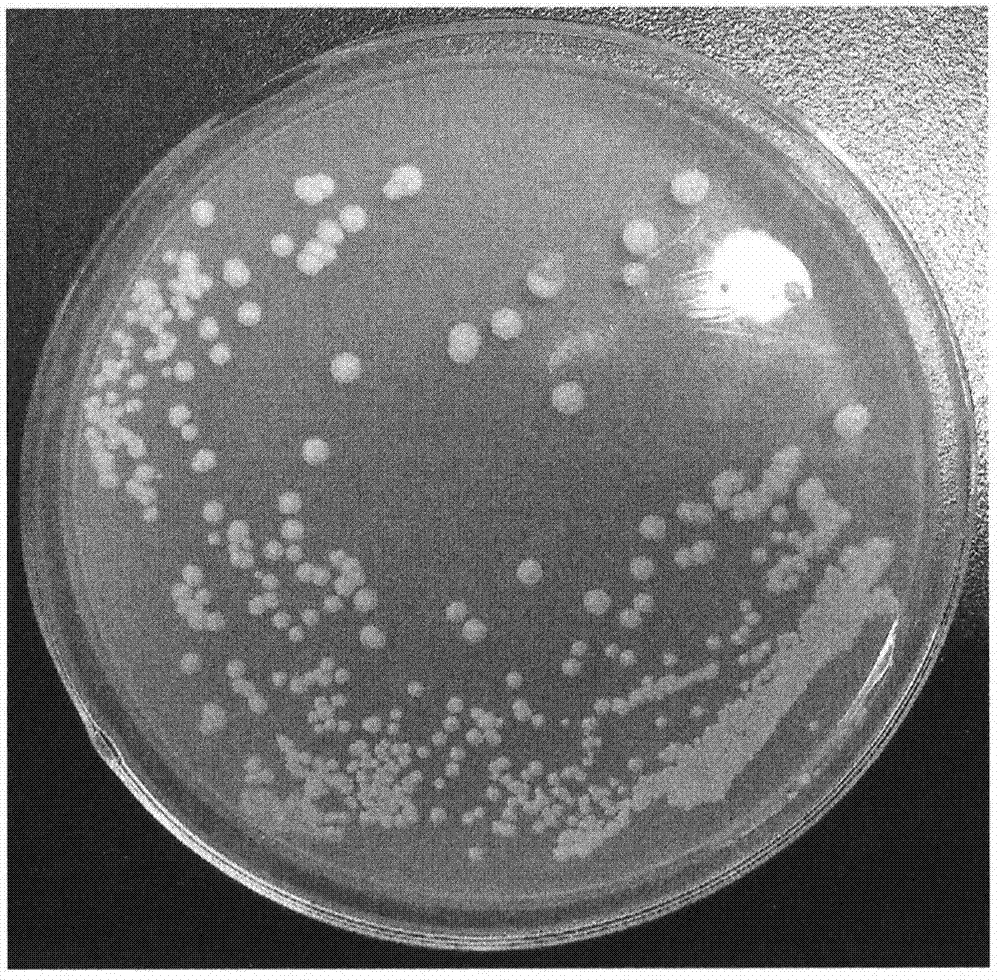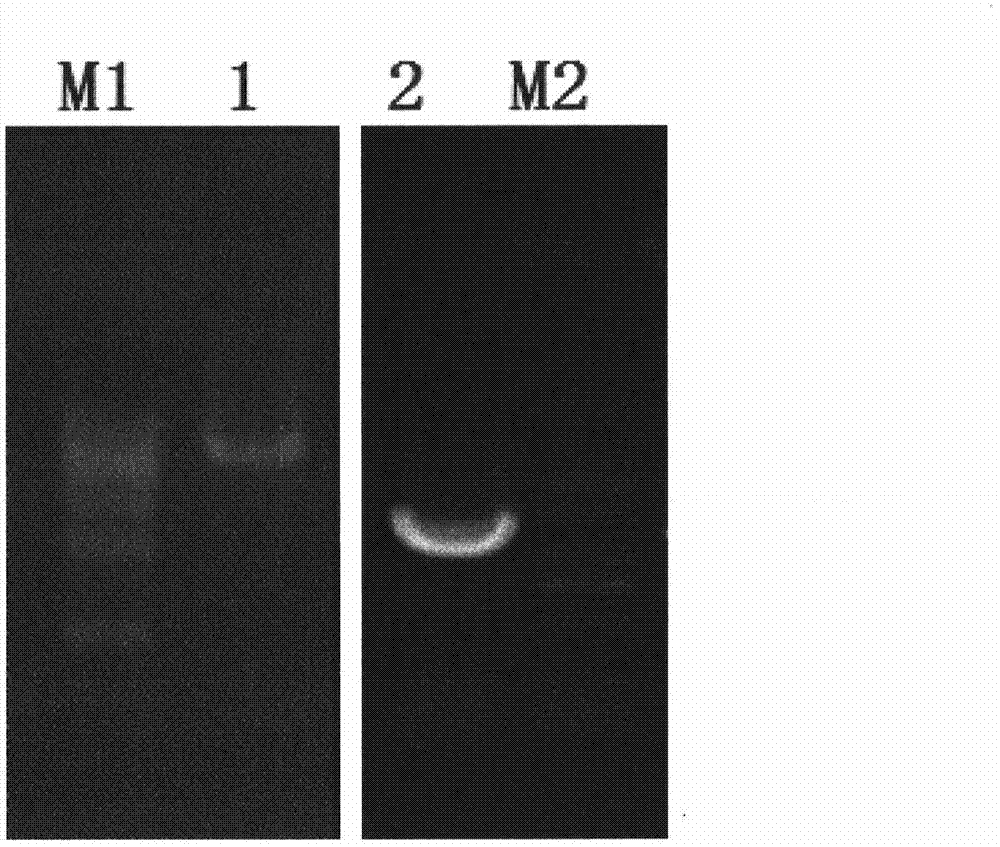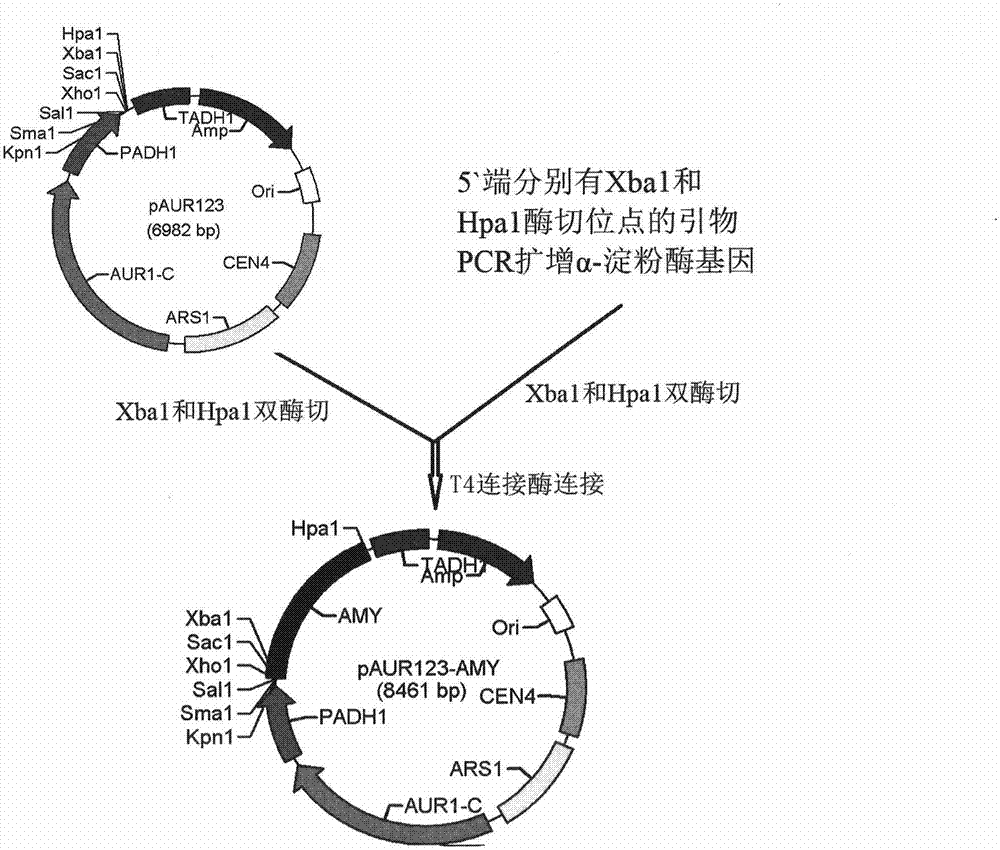Construction of engineering bacterium for expressing alpha-amylase and application of engineering bacterium in animal feed
A technology of amylase and recombinant engineering bacteria, which is applied in the fields of genetic engineering and animal feed science, can solve the problems of reduced ability to secrete amylase and slow metabolism, and achieve the effects of improving utilization rate, saving costs, and promoting healthy growth
- Summary
- Abstract
- Description
- Claims
- Application Information
AI Technical Summary
Problems solved by technology
Method used
Image
Examples
Embodiment 1
[0029] Screening of high temperature resistant Saccharomyces cerevisiae from bovine rumen: Take a little rumen juice and add it to potato-glucose liquid medium to enrich high temperature resistant Saccharomyces cerevisiae at 39°C, and then isolate high temperature resistant Saccharomyces cerevisiae on tiger red medium at 39°C . Screening of a strain of Saccharomyces cerevisiae FCN (Saccharomyces cerevisiae FCN) that grows most vigorously at 39°C (the preservation number in the China Type Culture Collection Center is: CCTCC M 2014390), and its growth on the starch-YPD medium plate like figure 1 shown.
[0030] Potato-glucose liquid medium: potato 200g / L, glucose 20g / L. Peel and slice 200g of potatoes, add water and boil for 30min, filter through gauze, add 20g of glucose, make up 1L of distilled water, and adjust the natural pH.
[0031] Tiger red (Bengal red) medium: peptone 5.0g / L, glucose 10g / L, KH 2 PO 4 1.0g / L, MgSO 4 0.5g / L, Bengal Red 0.033g / L, chloramphenicol 0.1g...
Embodiment 2
[0034] Construction of α-amylase gene recombination vector: PCR amplification of α-amylase gene from a fungal genome, its DNA sequence is shown in SEQ ID NO.1, consisting of 1485 bases, the protein sequence encoded by the gene As shown in SEQ ID NO.2, it consists of 494 amino acids. There are Xba1 and Hpa1 restriction sites corresponding to the shuttle plasmid pAUR123 at the 5' ends of the two PCR primers. The PCR product was connected to a T-vector, transformed into Escherichia coli DH5a and sequenced.
[0035] PCR primers, Up: TCTAGAATGCAAATTTCAAAAGCTGCTTTGCTTG;
[0036] Down: GTTAACTCATGAACAAATGTCCAGAAGCATATTTAG
[0037] PCR reaction system (50μL):
[0038]
[0039] Reaction conditions for PCR amplification: initial denaturation at 94°C for 5 min, denaturation at 94°C for 30 sec, annealing at 56°C for 30 sec, extension at 72°C for 100 sec, 30 cycles, and final extension at 72°C for 8 min.
[0040] The DNA sequence of α-amylase gene was correctly sequenced to extract ...
Embodiment 3
[0047] Transformation of engineered bacteria containing α-amylase gene: the host bacteria is preferably thermostable Saccharomyces cerevisiae. Extract the plasmid pAUR123-AMY from the Escherichia coli transformed in step 2, transform Saccharomyces cerevisiae FCN (Saccharomyces cerevisiae FCN) with the lithium acetate method (see the pAUR123 vector manual of TaKaRa for specific steps), and use the YNB medium containing Aureobasidin A to select Positive transformants (such as Figure 4 Shown), obtain the engineered bacterium that contains α-amylase gene.
[0048] The engineered bacteria were cultivated in a medium whose carbon source was starch, and single colonies of the original strain and the engineered strain were picked and inoculated into 250-mL Erlenmeyer flasks containing 50 mL of YPD medium, and cultured overnight at 39°C and 150 rpm with shaking. 1mL was inoculated into a Erlenmeyer flask containing 50mL of medium with starch as the carbon source, cultured with shakin...
PUM
 Login to View More
Login to View More Abstract
Description
Claims
Application Information
 Login to View More
Login to View More - R&D
- Intellectual Property
- Life Sciences
- Materials
- Tech Scout
- Unparalleled Data Quality
- Higher Quality Content
- 60% Fewer Hallucinations
Browse by: Latest US Patents, China's latest patents, Technical Efficacy Thesaurus, Application Domain, Technology Topic, Popular Technical Reports.
© 2025 PatSnap. All rights reserved.Legal|Privacy policy|Modern Slavery Act Transparency Statement|Sitemap|About US| Contact US: help@patsnap.com



